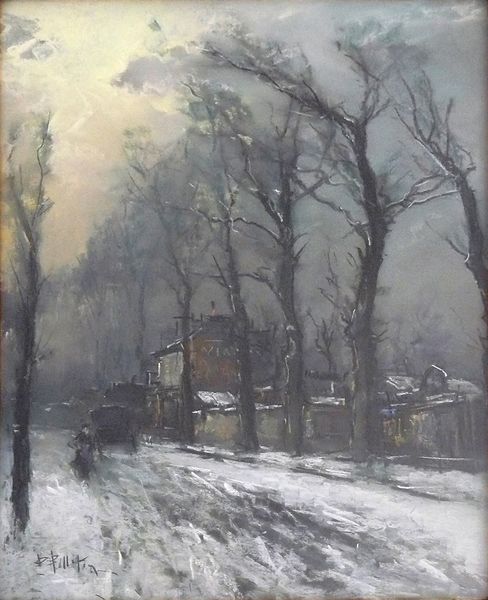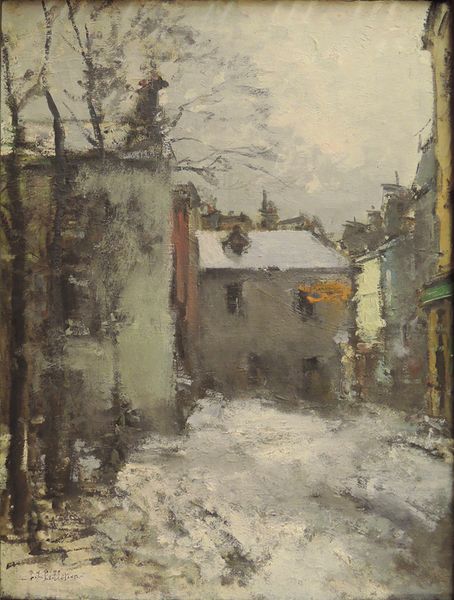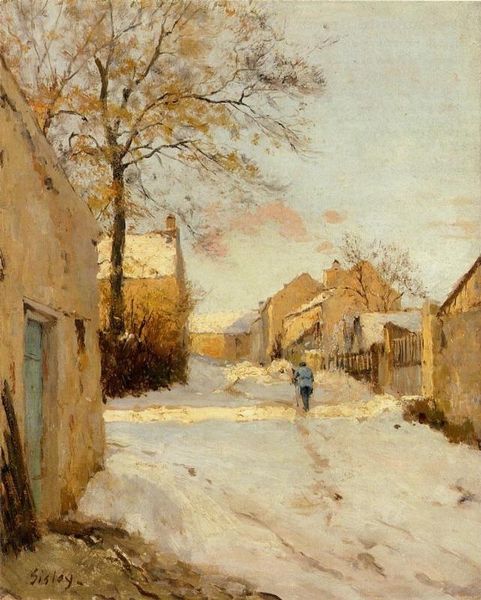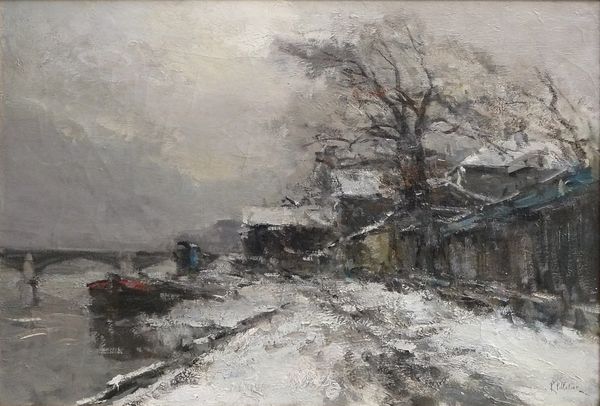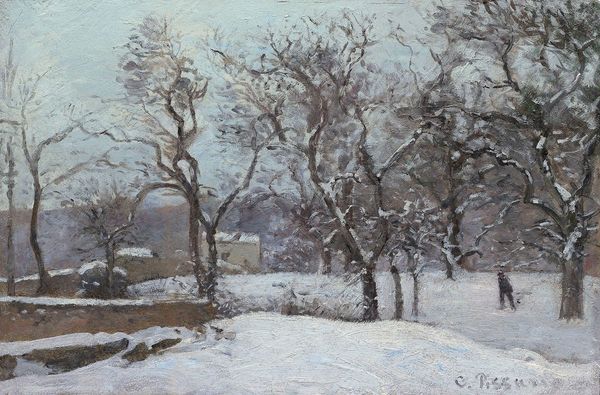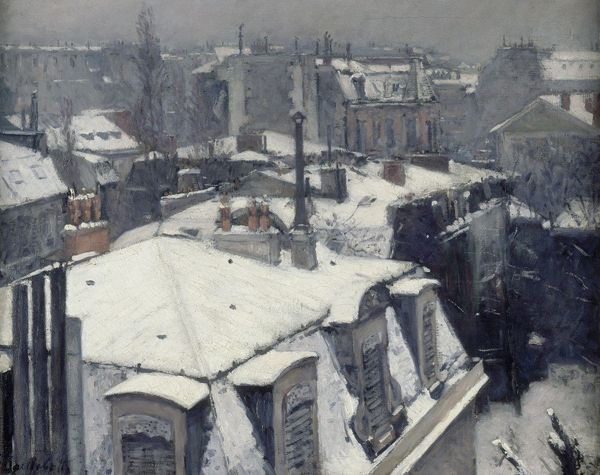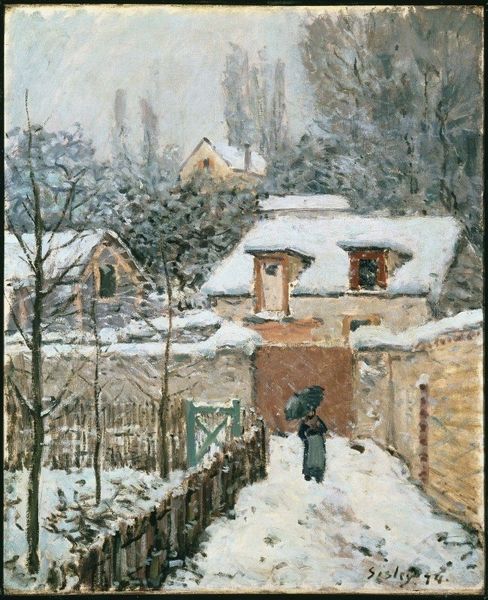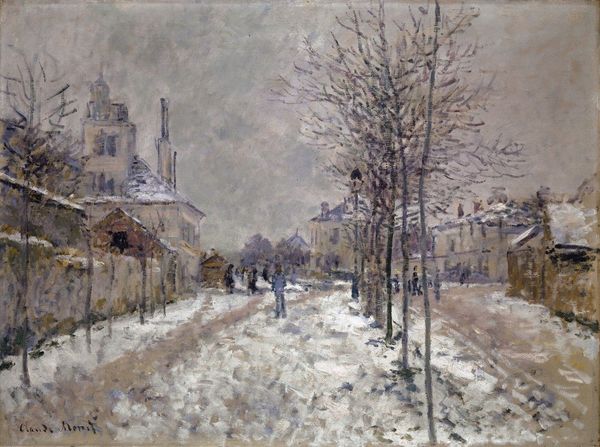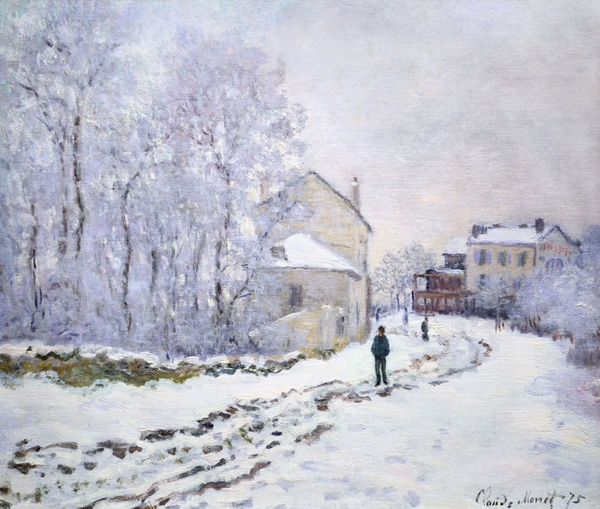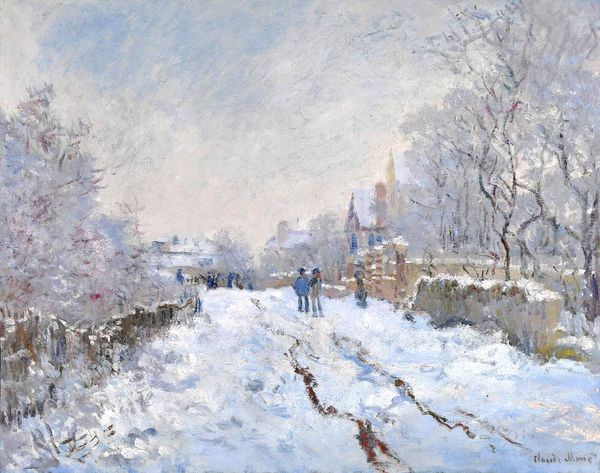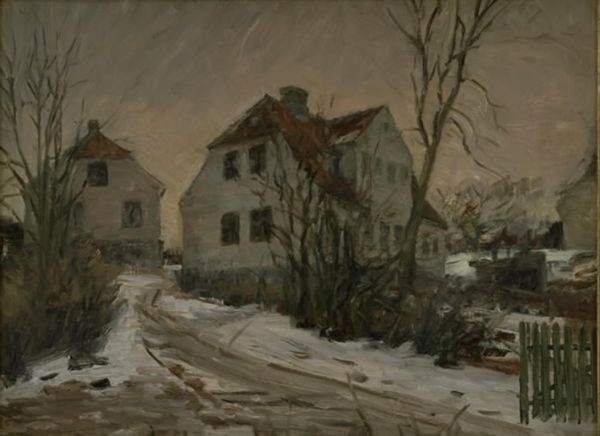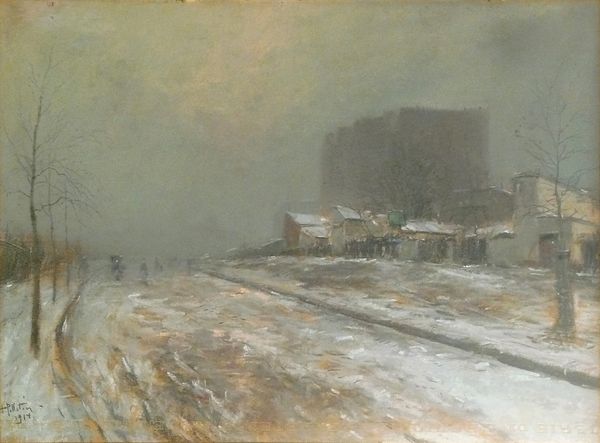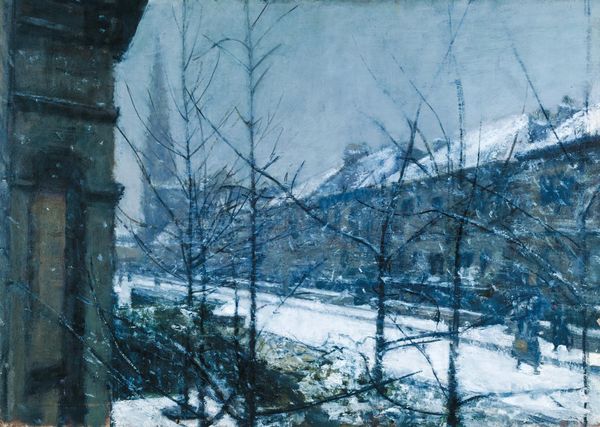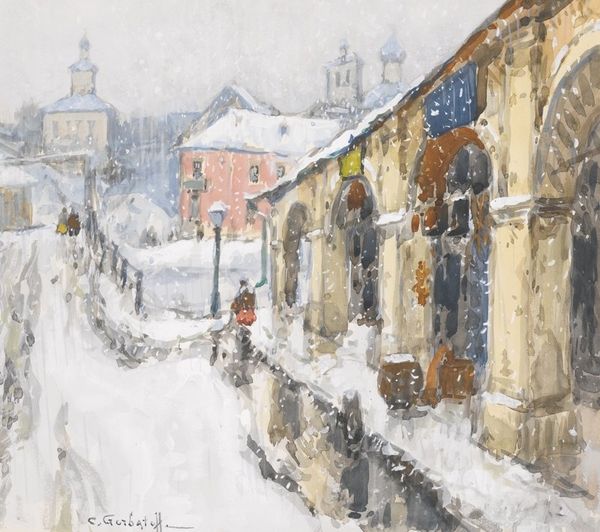
painting, plein-air, impasto, pastel
#
painting
#
plein-air
#
neo-impressionism
#
landscape
#
impasto
#
symbolism
#
cityscape
#
pastel
Dimensions: 79 x 58 cm
Copyright: Public domain
Curator: This is “Neige à Montmartre” by Pierre-Jacques Pelletier, done in pastel. The artist applied the pastels using impasto and plein-air techniques, characteristic of Neo-Impressionism. Editor: The cool blues and greys really give it a feeling of crisp, wintry air. What I find most interesting is the impasto technique – the paint seems really thick. What does that say about the creation process and the social context surrounding the materials employed? Curator: The thickness and application of the pastel isn’t just aesthetic; it speaks to Pelletier’s deliberate use and potential rejection of readily available materials for high art in favor of laborious applications. Neo-Impressionism wasn’t just about depicting light; it was often about a conscious decision regarding how that depiction was achieved. Editor: So, instead of quick, flowing lines we see controlled applications of impasto? Curator: Precisely! What does this potentially say about the perceived value of leisure time depicted in many other landscape paintings, when compared to a more time consuming technique that embraces materiality? How does this challenge any assumed boundaries of what high art can be by almost flaunting its labored existence? Editor: That is so interesting, I always saw landscapes simply representing scenes but I never gave thought to how materials, Neo-Impressionistic ideals, and application techniques play such key roles in redefining value! It really goes beyond merely capturing scenery. Curator: It highlights the artist’s involvement, labour and their intentional social commentary. Editor: I'll never view landscapes quite the same again, keeping the materials and the process behind them in my analysis. Curator: Indeed, a painting is not only what is depicted but *how* it is depicted. The hand of the artist is in every layer and color, contributing to the discourse of labor.
Comments
No comments
Be the first to comment and join the conversation on the ultimate creative platform.
